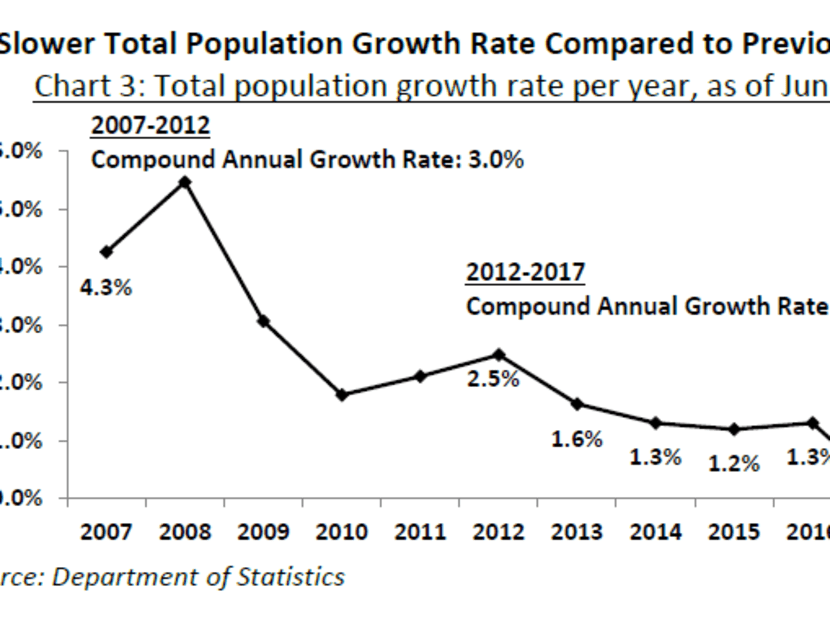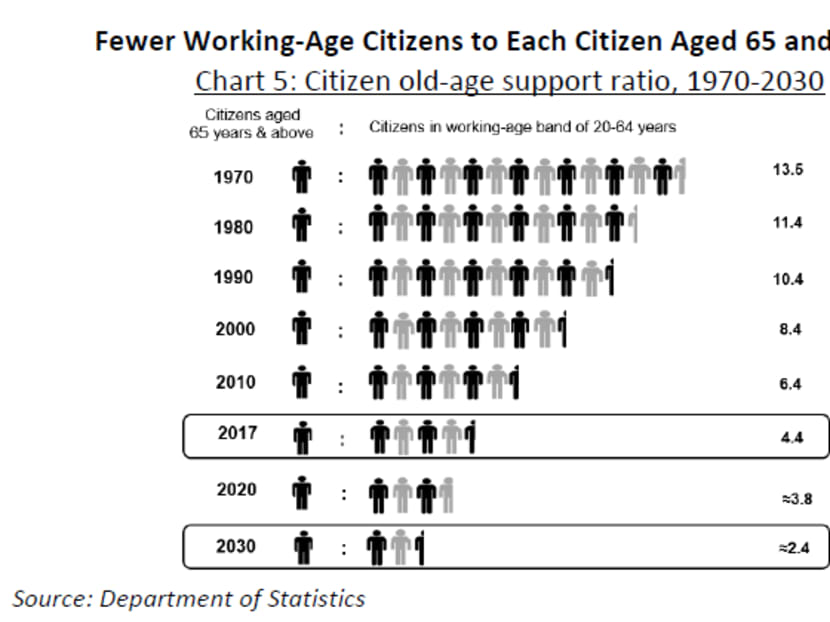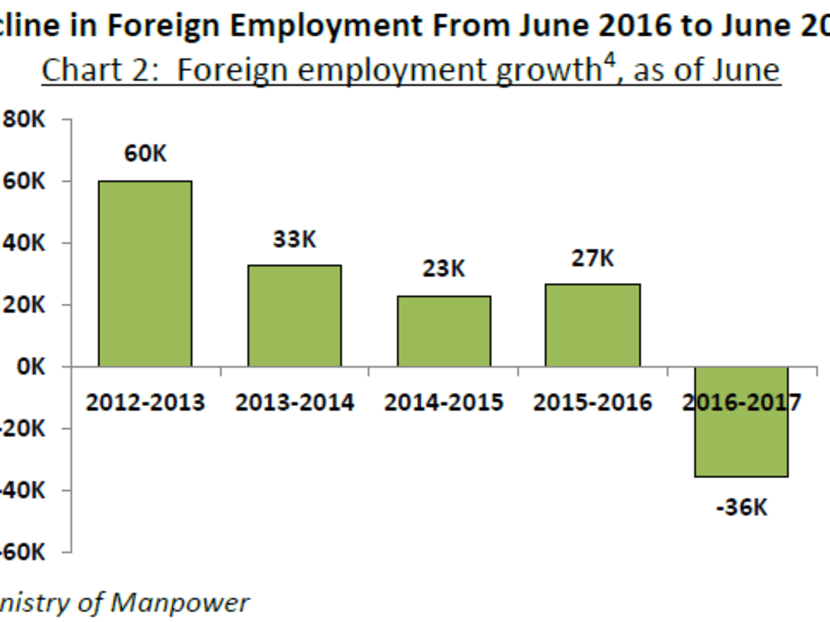S’pore posts flat population growth; lowest in over 10 years
SINGAPORE – The Republic’s population growth was almost flat last year at 0.1 per cent, compared to 1.3 per cent growth in the previous year, amid lesser citizen births and a drop in non-resident population. The citizen population, however, continues to age.

Singapore's population grew by 0.1 per cent last year, bringing to the total population number to 5.61 million. Photo: TODAY file photo
SINGAPORE — Amid fewer citizen births and a drop in non-resident population driven by a decline in foreign employment, the Republic’s population growth over the past year was almost flat — posting the slowest growth in more than a decade.
As of June this year, Singapore’s total population stood at 5.61 million, up 0.1 per cent compared with last year, the latest annual population brief released by the National Population and Talent Division (NPTD) on Wednesday (Sept 27) showed.

Click to enlarge
In comparison, the population grew by 1.3 per cent between 2015 and 2016. NPTD said that between 2007 and 2012, the compound annual growth rate was 3 per cent. The figure fell to 1.1 per cent between 2012 and last year.
Data from 2003 onwards exclude residents who have been away from Singapore for a continuous period of 12 months or longer as at the reference period. Hence, population data before 2003 cannot be used for comparison.
The latest statistics showed that the citizen population continues to age: The proportion of citizens aged 65 and above rose to 14.4 per cent, up from 13.7 per cent last year. Citizens’ median age also increased to 41.3 years, compared with 41 years in 2016.
There were 33,167 citizen births last year, compared to 33,725 in 2015. Nevertheless, the number of citizen births remained above the past decade’s annual average of about 32,200 citizen births.
“With increasing life expectancy and low fertility rates, the proportion of our citizen population aged 65 years and above is rising, and doing so at a faster pace compared to the last decade,” said the NPTD. “We can expect the large cohorts of ‘baby boomers’ to begin entering the post-65 age range.”
In the past year, the number of citizens rose by 0.9 per cent through births and immigration. Last year, 22,102 individuals were granted citizenship, while 31,050 people were given permanent residency.
As of June this year, the number of permanent residents remained stable at 530,000.
The non-resident population fell by 1.6 per cent to 1.65 million. The fall was driven mainly by a decline in the number of work permit holders in the construction, and marine and offshore engineering sectors, reflecting the weakness in these industries, NPTD said.

Click to enlarge
Economists interviewed by TODAY noted the economic outlook has affected the demand for foreign workers from these sectors. Nevertheless, they also pointed out the fall in non-resident population was a result of deliberate Government policy decisions. Singapore University of Social Sciences (SUSS) lecturer Walter Theseira said: “What’s important to note is that total population figures in Singapore are to a large extent controlled by policy... the number of people who would like to work here, both high- and low-skilled, far outstrips our ability to take them in.”
He added: “So when the population figures fall, it is not because suddenly, people have decided that Singapore is not an attractive place to be. It is simply the result of tighter Government policy on the kinds of workers we want to accept, combined with some reductions in demand in sectors that heavily rely on foreign workers.”
For example, Singapore “could make up the fall in numbers readily” if the Government reduce foreign worker levies and encouraged other industries to hire foreigners, “but that is not something that would be good for our economic restructuring efforts”, Dr Theseira said.
Beyond the sectors cited by NPTD, Dr Theseira noted the “strong policy shift away from lower value added foreign employment”.

CIMB Private Banking economist Song Seng Wun also pointed out that with the completion of several major projects such as Changi Airport Terminal 4 and Downtown Line stations, many foreign construction workers have returned to their countries.
UOB economist Francis Tan added: “Both public and private projects are also (slowing) down, so if you are in the construction sector, you need to cut cost... the main thing is to cut the labour cost.” As the sector hires a larger proportion of foreign workers compared to other industries, these workers would be the first to be let go in such a situation, he noted.

Click to enlarge
Nevertheless, Mr Song felt that the numbers would rebound, as some businesses struggle to hire Singaporean workers. There could be demand for foreign workers from the information technology (IT) sector, for example. “(Companies) are likely to hire more workers in line with the signs of sustainable recovery in Singapore’s economic growth,” he added.









